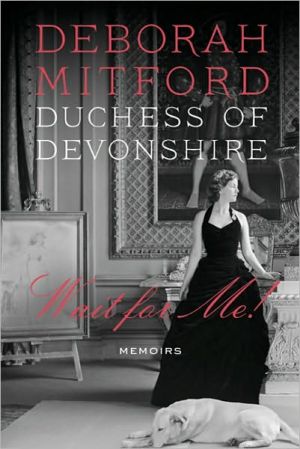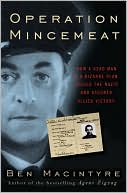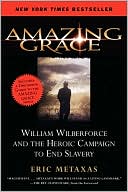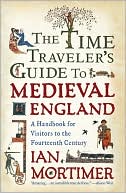Bright Young People: The Lost Generation of London's Jazz Age
One of the most extraordinary cults of youth and frivolity in history, the Bright Young People were a voraciously pleasure-seeking band of bohemian party-givers and blue-blooded socialites who romped through the gossip columns of 1920s London. This is a chronicle of a lost generation of the Jazz Age and a panoramic portrait of a world that could encompass dizzying success and paralyzing failure. Drawing on the virtuosic writings of the Bright Young People themselves, the prizewinning...
Search in google:
The modern obsession with celebrity began with the Bright Young People, a voraciously pleasure-seeking band of bohemian party-givers and blue-blooded socialites who romped through the gossip columns of 1920s London. Drawing on the virtuosic and often wrenching writings of the Bright Young People themselves, the biographer and novelist D. J. Taylor has produced an enthralling account of an age of fleeting brilliance. The Barnes & Noble Review We are by now so hopelessly mired in celebrity culture that it's almost impossible to conceive how recent a phenomenon it is: not even a century old, it turns out. The first group to comprise a celebrity culture in the modern sense was London's so-called Bright Young People, a free-spending, high-profile mixture of bohemians and aristocrats who partied their way exhibitionistically through the 1920s. They were too young to have fought in World War I but had been brought up in its shadow, seeing many of their older brothers and friends killed on the Western Front. Their reaction to the inevitable survivor's guilt, and to the rather rigid Edwardian mores of their parents -- the generation who had brought about the war, after all -- was rebellion through flippancy. They thumbed their noses at life and its tragedies with deliberately provocative frivolity and excess; the emblematic event of the era was the well-publicized theme party. As Evelyn Waugh wrote in Vile Bodies (1930), the seminal Bright Young People novel, there were "masked parties, Savage parties, Victorian parties, Greek parties, Wild West parties, Russian parties, Circus parties .dull dances in London and comic dances in Scotland and disgusting dances in Paris ." And on and on.
CHAPTER ONE\ FIGURES IN A LANDSCAPE\ Human nature being what it is, trivial and surface manifestations of revolutionary exuberance will always have a fascination for the average reader.\ —DOUGLAS GOLDRING,The Nineteen-Twenties (1945)\ The 1920s were the great age of the press sensation. The defrocked vicar, the nightclub raid, the genteel murder, the man swallowed whole by the whale and regurgitated onto the sand bleached white by its gastric juices—all these were served up by mass-market newspapers as indiscriminately as a packet of hundreds and thousands. Middle-class readers who opened their copies of the Daily Mail on July 26, 1924, found a yet more enticing phenomenon: the discovery, alive and kicking on the streets of central London, of nothing less than a brand-new youth cult. chasing clues, the report proclaimed. NEW SOCIETY GAME.\ MIDNIGHT CHASE IN LONDON\ 50 MOTOR CARS\ THE BRIGHT YOUNG PEOPLE\ This, the Mail’s reporter continued, using the language of the hunting field, was the "final meet" of the "Society of Bright Young People," a nebulous body that had inaugurated a series of treasure hunts through the capital. The society had apparently grown from "a few enthusiastic couples hunting for a prize of a few pounds" to a movement that had "captured all smart London." There followed a description of the "meet" and the celebrities present—these included the actresses Gladys Cooper and Tallulah Bankhead—then a graphic account of the hunt itself, written up in a style halfway between the report of a race meeting and a fashion page.\ By this time slow cars had given place to high-powered ones, and slow wits to faster wits, so that the field, which had started some 50 cars strong, all closely packed, jostling for position, was straggled out, though still traveling well.\ Lovely coiffures and beautiful dresses deftly arranged were no longer in that form. Shingled heads scored heavily, for long hair was in many cases streaming in the breeze. Dressmakers should rejoice for the birth of the Bright Young People, for few of the frocks which went to Seven Dials yesterday morning will ever see the light of a ballroom again. A crawl on all fours in that none too clean neighborhood . . . in search of an elusive clue chalked on the pavement, has soiled the majority beyond repair.\ After cruising around the seedier purlieus of Covent Garden, members of the convoy concluded their evening at Norfolk House, St. James’s, where in addition to the final clue "a splendid breakfast had been prepared and a string band to cheer them after their strenuous adventures."\ Thus set down, the account introduces most of the elements that would subsequently be associated with the Bright Young People: glamour, money, famous names and lashings of snob appeal. The baton was soon taken up by other papers: Punch published a cartoon the very next month in which a burglar claims to be a Bright Young Person. It was entirely appropriate that the initial unveiling should take place in the Daily Mail. One of the features of the cultural landscape of the immediately postwar period was the emergence of a new middle-class press, one step up from lowbrow tabloids such as the Mirror, several rungs down from the sonorities of The Times and the Telegraph, less keen on straightforward news and political debate than on what were known as "talking points," personages and personalities. "Get more names in the paper. The more aristocratic the better, if there’s a news story around them," Lord Northcliffe, the Mail’s proprietor, had instructed his staff, sounding rather like Lord Copper of the Daily Beast in Evelyn Waugh’s Scoop. "Everyone likes reading about people in better circumstances than his or her own . . . Write and seek news with at least the £1,000 a year man in mind."\ By the standards of the mid-1920s the "£1,000 a year man" was a fabulous plutocrat: the average provincial clerical wage, for example, was barely a tenth of this figure. Such discrepancies between the profile of the average reader and the moneyed exquisites whom journalists were supposed to have in mind brought an odd or, from the angle of modern journalism, thoroughly conventional focus in which readers were silently encouraged to aspire to a condition, an income and a way of life that hardly any of them could ever hope to achieve. At the same time, as part of its campaign to render journalism less staid and more attractive to the potential purchasers, the Mail was keen on "stunts"— sand castle competitions at holiday resorts, improvements to the British loaf, the "Daily Mail hat," halfway between a Homburg and a bowler, and, despite the fact that Winston Churchill was persuaded to be photographed in it, one of the paper’s few failures. Nothing could have been more of a "stunt" than the handful of socialites who jammed their expensive cars into the narrow byways of Seven Dials. Not only did the "society" already exist, contain recognizable figureheads and pursue favorite recreations, its members seemed perfectly happy to assist in their own exploitation. If the Bright Young People had shunned publicity and kept themselves to obscure country houses or Mayfair cellars, their individual destinies might have been very different. As it was, they concluded an instantaneous compact with the press which, in the end, was to prove their undoing.\ As the Mail’s reporter had deduced, the origins of the Bright Young People predated their lavishly framed public debut. Essentially they grew out of the activities of a small and initially faintly exclusive group that included Lady Eleanor Smith, Elizabeth Ponsonby, Zita and Baby Jungman and Elizabeth’s cousin, with whom she was frequently confused, Loelia Ponsonby. Loelia dated the origin of the treasure hunt to the day sometime in 1922 or 1923 when\ Zita and Teresa and Eleanor and another friend, Enid Raphael, had nothing to do so they invented a new kind of paper-chase. Zita and Eleanor were the hares with five minutes start and they zig-zagged about London using buses and undergrounds and leaving clues behind them as they went. This turned out to be such an exciting game that they asked me and some other girls to join in and we used to amuse ourselves on blank afternoons by chasing each other round London.\ All these young people fitted Lord Northcliffe’s criteria for news-worthiness. Eleanor Smith was the daughter of Lord Birkenhead, formerly lord chancellor and soon to be appointed secretary of state for India; Mrs. Jungman’s second marriage had attached her daughters to the great brewing house of Guinness; Loelia’s father was "Fritz" Ponsonby, later Lord Sysonby, and at this point in a long courtier’s career comptroller to King George V. The girls, and their biddable male associates, specialized in small-scale practical joking. Eleanor, Brian Howard and their friend Alannah Harper, for example, once broke into the Surrey mansion of the Richard Guinnesses—Zita’s and Baby’s mother and stepfather—stole Mrs. Guinness’s pearls and burned the flannel nightdress brought by her guest Mrs. Asquith in that lady’s bedroom. The police were called and a scandal averted only by an apologetic telephone call from Mrs. Howard.\ Generally, these early manifestations were greeted with a certain amount of indulgence. Low-key at first, the spoofs became more and more elaborate. Baby, for instance, pretended to be a reporter from a nonexistent newspaper and interviewed Beverley Nichols at Claridge’s while her sister and Eleanor hid under the table. One treasure hunt led to the Hovis factory on the Embankment, where a clue had been baked into a loaf of brown bread, and on another to a special edition of the Evening Standard, printed with the amused connivance of its proprietor, Lord Beaverbrook. In the course of one small-hours foray on Buckingham Palace, the captain of the guard took fright at the convoy of cars and telephoned for reinforcements. As the field increased the pool assembled at the outset could rise to as much as £100, while spin-off activities became increasingly complex. There were "scavenger" parties, where guests were bidden to bring back a spider in a matchbox, a policeman’s helmet or one of Stanley Baldwin’s pipes, and devious hoaxes in which Eleanor masqueraded as a Russian princess or a young man introduced to his fellow guests at a country house party as "Prince Michael of Serbia" kept up the deception throughout the weekend, telling fantastic stories of his motoring exploits and being allowed to get away with some spectacular cheating at bridge.\ The point about these early exploits, other than irritating the people who came within their orbit, is that they established the celebrity of individual members of the Bright Young People long before the movement had any deliberate focus. John Rothenstein remembered meeting Elizabeth Ponsonby for the first time at a lunch party in 1923: "a stylishly slender girl of about twenty-two, with an oval pale face especially modeled, it seemed to me, to express an aristocratic disdain . . . Already she was something of a legend." Elizabeth’s mother, the formidable Dorothea Ponsonby, was alarmed by the rise of a new, ostentatiously moneyed, younger "set" in which her much less well-off daughter had become all too willingly entangled. "E’s standard of riches angers me," she confided to her diary late in the same year. "Taxis always—everywhere. It doesn’t amuse her to dine anywhere but at the Berkeley. She lives like a person with £3,000 a year who spends £800 on her dress." Where her daughter, supposedly sustained by a tiny parental allowance, got her money from Dorothea didn’t care to inquire, she decided. But whatever its source, "the standard set by her nouveau riche friends is impossible."\ Dorothea’s complaints would be restated on countless occasions during the next few years by parents bewildered by what they perceived as reckless extravagance and bad company. Meanwhile, there are two fundamental questions to be asked. Who were the Bright Young People and, perhaps more easily answerable, where did the phrase originate? Etymologically, "Bright Young Person" is only one among a number of sobriquets that came into being in the 1920s to describe a part of the social demographic usually on the right side of thirty but in some cases many years or even decades beyond it. The most resonant of these was the collective tag of "the lost generation," whose echoes were still faintly resounding as late as the eve of the Second World War. "‘You are all a lost generation!’ remarked Gertrude Stein of us post-war age groups," runs the second line of "Where Engels Fears to Tread," Cyril Connolly’s spoof on the noncareer of Brian Howard, "and now . . . we know who lost us." Stein had supposedly coined the phrase to describe the evocations of jeunesse dorée pioneered by F. Scott Fitzgerald and Ernest Hemingway in novels such as the former’s The Beautiful and Damned (1922) and the latter’s The Sun Also Rises (1926). Alec Waugh, alternatively, remembered a never-to-be-published book of this title by Douglas Jerrold coming his way in 1920. This suggested to him that the expression was in current usage only a year or so after the Great War.\ Whatever its origin it had, essentially, two meanings. On the one hand, large numbers of young men had been literally "lost," that is, wiped out by the conflict of 1914–18. Looking through the Sherborne old boys’ circular in 1942, Waugh calculated that exactly half the forty-two boys admitted to the school in his own year of entry, 1911, were dead, the majority of them on the Western Front. The survivors of this carnage were lost in a different way: set adrift in a postwar world that had changed beyond recognition and whose new protocols were ominously difficult to comprehend. "And of those who had so far survived," Waugh went on, surveying the thousands of young ex–army officers like himself who had seen their lives thrown into disarray, "how many had not had their chances of making an effective contribution to the world of their generation ruined by the interruption of their education, the dislocation of their plans?" But however "lost," dispersed and vagrant, and irrespective of whether they had fought in the war, young people of the kind who followed the early 1920s treasure hunts, or went scavenging in search of a celebrated actress’s corsets, nearly always considered themselves homogenous, part of the same broadly defined social group, sustained if not by social or economic ties then by a communal view of the life they led.\ Brian Howard once inscribed a book to "Harold Acton, the poet of my generation"—which is subtly proprietorial, perhaps, but also acknowledges the existence of a collective spirit. Evelyn Waugh, writing in 1929 to Henry Yorke about their mutual friend Diana Mitford, newly married to Bryan Guinness, wondered "Do you and Dig [Yorke’s wife] share my admiration for Diana? She seems to me the one encouraging figure in this generation." One doesn’t have to regard the young Guinnesses as the idlest of social butterflies to think that this is a rather extraordinary claim to be made of a girl not yet past her twentieth birthday, and to assume that there are secret codes at work, a kind of quietly canvassed spiritual consanguinity of which only Waugh and his immediate circle were aware. What made Diana Mitford exceptional? The outsider cannot tell, but Waugh’s assumption of hidden depths is intriguing, and yet more so in that it exists in direct contrast to a surface world of partygoing, expensive cars and rentier lucre.\ Much less exact is the description "Bright Young Thing." Again, this was in general use very soon after the end of the First World War, but the meaning is all-purpose, as imprecise in its way as "flapper." A Bright Young Person may have been a Bright Young Thing, but not all Bright Young Things were Bright Young People. The chattering twenty-somethings who infest literary parties attended by Gordon Comstock, the disaffected hero of Orwell’s Keep the Aspidistra Flying (1936)— "troops of bright young things who dropped in for half an hour, formed circles of their own and talked sniggeringly about other bright young things whom they referred to by nicknames"—have nothing to do with Elizabeth Ponsonby and her friends: this is simply Orwell’s shorthand for anything juvenile, bumptious and loud. Used in this way, "Bright Young Thing" had a wide currency throughout the 1920s and beyond, variously employed as a means of identification, an archetype (as in newspaper articles about "What the bright young thing is thinking") and as an advertising tool designed to reach anyone between the ages of eighteen and thirty-five.\ "Bright," in any case, was one of the key adjectives of the decade, regularly applied—again, mostly by newspapers and society magazines—to any activity that seemed to represent a departure from the prewar groove or a challenge to prewar staidness. A "Brighter London Society" had been founded as early as 1922—patrons included the Bishop of Birmingham and Gordon Selfridge—with the aim of making London "economically the most worthy and beautiful city in the world." Among the usages identified by Punch in the 1920s, for example, were campaigns for "Brighter Clothes for Men," "Brighter Motoring," "Brighter Pantomimes" and even "Brighter Bridge." It was inevitable that some of this luster should rub off on youth. In the late-twenties press advert for Abdulla cigarettes a group of dandified exquisites, in what looks like elaborate fancy dress, are greeted by their hosts at the door of a smart-looking town house. The accompanying poem by F. R. Holmes brings together several contemporary assumptions about Bright Young People—"smartness," partygoing, the thought of a great deal of extravagance achieved on the cheap—while misnaming them. The cast of "The Bright Brigade," in fact, look remarkably like the real-life faces to be seen every week in the Tatler. In contrast to "Bright Young Thing," or more concrete social groupings that gossip columnists of the period occasionally infiltrated (Mrs. Dersingham in J. B. Priestley’s Angel Pavement tries to impress her guests by claiming a remote attachment to "all that young smart set, Mrs. Dellingham, young Mostyn-Price, Lady Muriel Pagworth, and the famous Ditchways"), "Bright Young Person" had a much more distinctive framing. Bright Young People, all the late 1920s evidence suggests, were that much more exclusive, better connected, the initiators of trends and fads rather than the acolytes who followed in their wake. In the last resort a Bright Young Thing was a stereotype, a Bright Young Person an identifiable individual whose footprints could be tracked all over the landscape of the London society magazines.\ None of this, though, tells us who the Bright Young People actually were. The first ever Bright Young Person, according to Osbert Sitwell, was Beverley Nichols. But Nichols had no real connection with the Jungman sisters and their immediate circle: he was an up-and-coming literary man with one eye on the stage and a weakness for the society of elderly aristocratic ladies. And yet, with his serial appearances in gossip columns and his ability to seem "in the swim and of the moment," as one journalist put it, he seemed to personify the mid-twenties cult of youth. In middle age, former members invariably emphasized the smallness of the movement’s scale, its exclusiveness and impenetrability: "a gang of boisterous juveniles," Nichols himself decided in 1949, acknowledging that the phrase "Bright Young People" had now become "painfully evocative." According to Douglas Goldring, a novelist and social chronicler of a rather older generation, "In the ’twenties a very small handful of Bright Young People secured a great deal of publicity by throwing wild parties and indulging in kindergarten orgies of gin, sex and drugs which caused their faces to be printed in the Sunday newspapers."\ The ranks of this "boisterous little gang of publicity hunters"— note again the use of the adjective "boisterous"—might have reached two thousand in all, Goldring calculated, "with a fringe of socialites and intellectuals of the kind portrayed in novels by Arlen, Huxley and later Waugh." Even allowing for hangers-on, two thousand looks like an overestimate. Newspaper unmaskings of key personnel tended to produce mixed results. To examine press coverage of the Bright Young People over the period 1924–30 is to find periodic shifts of emphasis as different sets and subsets move in and out of the limelight. Many of the original treasure hunters gave up by the mid-1920s, put off by the clamor of press attention. Loelia Ponsonby claimed that she never attended a Bright Young People gathering after 1925, and that even scavenger parties were a vulgar dilution of their animating spirit: as she rather disdainfully put it of the list of objects, "the embarrassment of trying to borrow them in the middle of the night can only have been equalled by the boredom of taking them back next day."\ Excerpted from Bright Young People by D. J. Taylor.\ Copyright © 2007 by D. J. Taylor.\ Published in 2009 by Farrar, Straus and Giroux.\ All rights reserved. This work is protected under copyright laws and reproduction is strictly prohibited. Permission to reproduce the material in any manner or medium must be secured from the Publisher.
Prologue: Dionysius in Mayfair 31 Figures in a Landscape 15The Burra Line 382 The Society Racket 403 Young Men on the Make: London 1924-28 60Mr. Pryce-Jones's Connections 904 Parents and Children 935 The Revolt into Style 117Elizabeth in Parties 1366 Partygoing: 1929 139On the Margin: Inez 1637 Success and Failure: Two Portraits 166The Meaning of Gossip 1848 Decline and Fall: 1930-31 187The Books Brian Never Wrote 2049 Celebrity Culture 20910 Gay Young People 230The Byronic Manner 24911 After the Dance: 1931-39 25212 Projections 282Miss Mitford's Tone 30413 Gone to Report: 1940 and After 307Appendix "Darling Eddie...Love B" 325Notes and Further Reading 329Index 347
\ Carolyn SeeJampacked and delicious, crammed with a cast of selfish, feckless, darling, talented, almost terminally eccentric, good-looking men and women, Bright Young People chronicles the doings of London's gilded youth in the Roaring Twenties. Even if you think you know a lot (or enough) about them; even if you've read the acerbic novels of the early Evelyn Waugh or plowed your way through Anthony Powell's A Dance to the Music of Time, there's bound to be material here you haven't seen or heard of.\ —The Washington Post\ \ \ \ \ Publishers WeeklyFans of Evelyn Waugh's Vile Bodies and Decline and Fall will recognize the glittering world of the "Bright Young People", the London socialites of the 1920s who had their costume parties and other exploits celebrated (and excoriated) in the tabloid media. Taylor, a literary critic and biographer, acknowledges that this crowd-which included Cecil Beaton and Nancy Mitford-were the Britney Spears and Paris Hilton of their day, but doesn't belabor the point excessively. Taylor's account is not so much a straightforward history as a bundle of thematic essays arranged chronologically; one chapter, for example, discusses the ways some gay "Brights" were able to avoid much of the repression prevalent throughout British society at the time, while another covers the themes of the fiction that came out of the scene. There are still plenty of juicy anecdotes to go around, although Taylor says that reports of drug-fueled orgies are "exaggerated," and points out that Britain in the 1920s was a tightly regulated society. The text is enlivened by several Punch cartoons from the period, vividly depicting the hold these rich young partygoers once held on the public's imagination. (Jan.)\ Copyright © Reed Business Information, a division of Reed Elsevier Inc. All rights reserved.\ \ \ Library JournalThis meticulously researched account of a notorious group of 1920s London partygoers was first published in England in 2007 to positive reviews, which noted the sensitive way novelist and biographer Taylor (Kept: A Victorian Mystery; Orwell: The Life) draws human detail from behind the gossip column scandals and the Evelyn Waugh novelizations that immortalized the group. Taylor shows how the media played a large part in creating the legend, manipulating those who fit the mold into an early expression of celebrity culture. Taylor begins with an analysis of who the members of this relatively small group of well-connected youngsters were. He considers their wartime childhoods, which perhaps contributed to their excess and dissipation. As Taylor details the rise of the group, from the mid-1920s to 1929, we read of their elaborate parties, unrepentant decadence, and refusal to settle down in early adulthood. Taylor then follows the decline of the group in the 1930s, as the next world war loomed. This detailed work, both biography and social history, is suited to academic and large public libraries.\ —Rebecca Bollen Manalac\ \ \ \ \ \ Kirkus ReviewsBritish biographer and novelist Taylor (Kept, 2008, etc.) offers a vivid group portrait of the 1920s pleasure-seekers who ought to have been-and sometimes were-characters in Evelyn Waugh's novels. Inveterate idlers and party animals, these vainglorious glitterati twinkled their way through London society, siphoning off their sometimes indulgent families' fortunes to bankroll lavish parties, elaborate pranks and sexual dalliances, while excitedly congratulating one another for the jaded stabs at originality. Major literary figures Waugh, Anthony Powell, the pseudonymous "Henry Green" and effervescent Nancy Mitford rubbed shoulders with such varied luminaries as celebrity photographer Cecil Beaton, journalist Tom Driberg, epicene underachievers Brian Howard and Stephen Tennant and unstable sybarites like Elizabeth Ponsonby. Taylor's study revels in snapshot accounts of their scattered activities, but never really abandons its essentially anecdotal structure-over 300-plus pages, repetition thus becomes unavoidable. But the particulars are often irresistible. One yearns to have been a fly on the wall at the "fancy dress ball . . . featuring a gang of fashionable debutantes dressed as the Eton rowing eight," or the notorious Bruno Hat exhibition of faked modernist paintings. Taylor expertly connects this shrill game-playing to memorable depictions of it in Waugh's Vile Bodies, Powell's Afternoon Men and Henry Green's Party Going, while never neglecting the actual achievements of their lesser peers (e.g., Beverley Nichols's forgotten novel Singing Out of Tune). A note of genuine pathos is struck in his description of how the increasingly straitened economic and political circumstances of the'30s began rendering this gaudy subculture obsolete. Immensely readable, and of real value as a sharply pointed cautionary tale.\ \ \ \ \ The Barnes & Noble ReviewWe are by now so hopelessly mired in celebrity culture that it's almost impossible to conceive how recent a phenomenon it is: not even a century old, it turns out. The first group to comprise a celebrity culture in the modern sense was London's so-called Bright Young People, a free-spending, high-profile mixture of bohemians and aristocrats who partied their way exhibitionistically through the 1920s. They were too young to have fought in World War I but had been brought up in its shadow, seeing many of their older brothers and friends killed on the Western Front. Their reaction to the inevitable survivor's guilt, and to the rather rigid Edwardian mores of their parents -- the generation who had brought about the war, after all -- was rebellion through flippancy. They thumbed their noses at life and its tragedies with deliberately provocative frivolity and excess; the emblematic event of the era was the well-publicized theme party. As Evelyn Waugh wrote in Vile Bodies (1930), the seminal Bright Young People novel, there were "masked parties, Savage parties, Victorian parties, Greek parties, Wild West parties, Russian parties, Circus parties....dull dances in London and comic dances in Scotland and disgusting dances in Paris...." And on and on. \ Vile Bodies and its predecessor, Decline and Fall (1928), read like insanely over-the-top satires, but many of his contemporaries noted that Waugh had hardly exaggerated anything. The truth was wild enough, and there are recognizable real-life counterparts for most of his characters, even the more extravagant ones such as Lady Metroland, Peter Pastmaster, Sir Alastair Digby-Vane-Trumpington, and Miss Agatha Runcible, profligate figurehead of the Bright Young People. The original for Miss Runcible was Elizabeth Ponsonby, the feckless daughter of a high-up Labour politician and granddaughter of Queen Victoria's private secretary. Revelations about her unedifying career have provided the raison d' être for D. J. Taylor's Bright Young People: The Lost Generation of London's Jazz Age.\ Taylor was given access to the Ponsonby family's unpublished letters and diaries, enabling him to reconstruct Elizabeth's career from her youth as the most visible partygoer of her time -- a sort of contemporary Paris Hilton -- through her brief and pathetic marriage, the sad period that saw her broke and boozy, scraping a living as manager of a sleazy nightclub, and her death from alcoholism at the age of 40. Her father's pleading letters make heartbreaking reading and sum up all the bitter contrasts of a generation gap whose width and depth would not be seen again until the 1960s.\ Observing the scene, as he does, through the prism of Elizabeth Ponsonby's life, Taylor's view of the Bright Young People is understandably jaundiced. But during its heyday the movement was an intensely creative one. It launched many careers, including those of Waugh, Anthony Powell, and Henry Green, three of the best novelists of the 20th century; John Betjeman, the most beloved English poet of his time; the brilliant light novelist Nancy Mitford; Cecil Beaton, who as a photographer and designer crystallized his world and delivered it to posterity; the Byzantinist Robert Byron; the historians Harold Acton and Lord Kinross; and many more. This cohort, however different and even mutually antipathetic its individual members might have been, shared a sensibility and an aesthetic that influenced British artistic and intellectual life throughout the century. The silly jargon and in-jokes of the '20s (to quote Vile Bodies again, on an occasion where Miss Runcible is arrested: " 'Well,' they said. 'Well! How too, too shaming, Agatha, darling,' they said. 'How devastating, how unpoliceman-like, how goat-like, how sick-making, how too, too awful' ") eventually developed into a recognizable ironic outlook that colored the work of all who had come in touch with it. "Their style," Taylor writes, "-- brisk, affected, outwardly impersonal, inwardly often deeply vulnerable -- influenced a host of descendents who knew nothing of their ancestry."\ Part of that style devolved from the gay sensibility enveloping the group. As Taylor says, "No English youth movement, it is safe to say, has ever contained such a high proportion of homosexuals or -- in an age when these activities were still illegal -- been so indulgent of their behavior," and all of the Bright Young entertainments were invested with an "irretrievable air of campness." The buffoonery of Byron, who liked to dress as Queen Victoria (whom he resembled), and Acton's silken façade and feline gift for gossip made their indelible mark; so did the outrageous Stephen Tennant, who ornamented the festivities with his "elaborately coiffed blond hair set in marcelled waves, and pale, flapping hands," and Brian Howard, who though "expected, not least by himself, to write novels that would out-Firbank Firbank in their orchidaceous subtleties...ended up as a tragic-comic turn in works by other people." (He was the inspiration for Waugh's Ambrose Silk and Anthony Blanche, among other literary characters.) A number of these epicene young men transported the '20s gay style far into the later 20th century: Harold Acton was still holding court at his Italian villa in the 1990s; the elderly Lord Faringdon, who as Gavin Henderson had graced Bright Young parties in his youth, was once heard to address the House of Lords not as "My lords" but as "My dears."\ As all of this indicates, the principle attraction of the Bright Young People was their humor -- at their best they could be devastatingly funny, as so many diaries, letters, and novels of the period prove. Taylor's book, strangely enough, is not funny; there is hardly a laugh in it, which puts him by definition at odds with the people whose lives he chronicles. There seems a basic lack of affinity; he doesn't particularly like these people, and he is not amused. His comments on the novels of the period are especially obtuse. One wonders why he chose to write about all this, aside from the tempting opportunity provided by the Ponsonby papers.\ Of course he is not unjustified in his dyspeptic outlook. The Bright Young People movement quickly curdled, with Elizabeth Ponsonby by no means its only casualty. Brenda Dean Paul, the "It" girl of the era who became a hopeless drug addict, remembered that by the end of the '20s "the parties became more and more frequent, more and more lacking in originality and amusement, until they became merely massed drinking orgies, attended by a few bleary-eyed demoralized bright young pioneers, too tired, too much in a groove to break away." The truly creative spirits had by now moved on; the grim political events of the '30s made the revels of the previous decade look decadent. Henry Green's brutal little novel Party-Going (1939) spelled finis to an era.\ Nevertheless, the movement's effervescent peak has charmed and fascinated subsequent generations. Taylor's book on the subject may possibly be the most comprehensive, but it is not the best or the most sympathetic. Martin Green's Children of the Sun (1976) did the same thing rather better, and Society Racket (1933) is a terrific eyewitness account by gossip columnist Patrick Balfour (later Lord Kinross). There are the matchless early romans à clef of Waugh, Mitford, and Powell, and there are countless memoirs, biographies, autobiographies, letters, and journals of the key players, including Betjeman, Acton, Howard, Tennant, Beaton, Tom Driberg, Cyril Connolly, Waugh, Powell, Green, Nancy and Jessica Mitford, and Diana Mosley (née Mitford). And then there are the many additional volumes catering to the British public's apparently insatiable appetite for all things Mitford.\ We, like the Bright Young People in 1930, now find ourselves on a dividing line between a time of gross excess and what appears to be a grim and threatening future. D. J. Taylor's schoolmarmish disapproval of his frivolous protagonists makes sense in the context of 2008 and in the context of 1930. But the book's underlying sourness fails to give the brightest days of the mid-'20s their due. --Brooke Allen\ Brooke Allen is the author of Twentieth-Century Attitudes; Artistic License; and Moral Minority. She is a contributor to The New York Times Book Review, The New Criterion, The New Leader, The Hudson Review, and The Nation, among others. She was named a finalist for the 2007 Nona Balakian Citation for Excellence in Reviewing from the National Book Critics Circle.\ \ \








